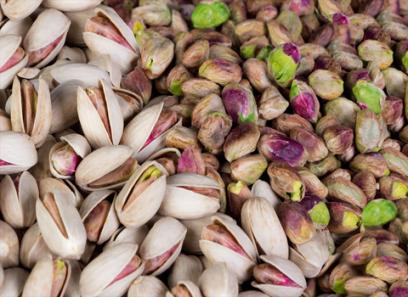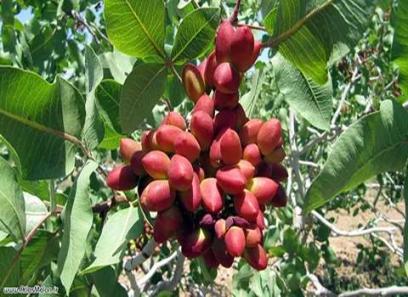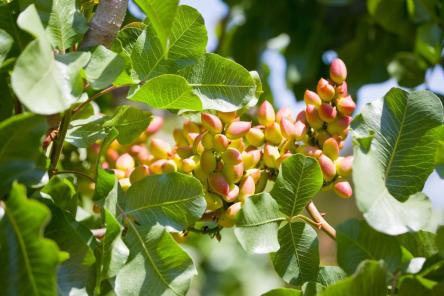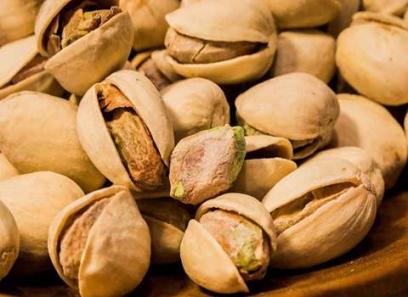Pistachios, a delightful and nutritious snack, have become increasingly popular in recent years.
As demand for these delectable nuts continues to rise, so does the curiosity surrounding the pistachio price per ton.
.
 Whether you’re a pistachio enthusiast or a business owner in the nut industry, understanding the factors that contribute to the fluctuating price of pistachios is essential. Currently, the pistachio price per ton varies based on several key factors.
Whether you’re a pistachio enthusiast or a business owner in the nut industry, understanding the factors that contribute to the fluctuating price of pistachios is essential. Currently, the pistachio price per ton varies based on several key factors.
One of the primary considerations is the overall supply and demand dynamics. Like any other commodity, when demand surpasses supply, prices tend to rise.
As more consumers recognize the health benefits and unique taste of pistachios, the demand for these green treasures is steadily increasing.
This surge in demand has put pressure on pistachio farmers and producers to meet the growing appetite for this sought-after nut.
Another influential factor in determining the pistachio price per ton is the global production of pistachios.
Countries such as the United States, Iran, and Turkey are significant producers of pistachios, and any disruptions in their production can lead to price volatility.
Natural disasters, climate change, and other unforeseen events can impact the supply chain, causing prices to fluctuate.
Moreover, pistachio prices are influenced by market conditions and competition.
As different suppliers vie for consumer attention, pricing strategies come into play.
Market forces, such as the prices of alternative nuts like almonds or cashews, also exert a certain level of influence on the pistachio price per ton.
Additionally, economic factors at a global level, including exchange rates and trade policies, can have a bearing on the cost of pistachios.
Furthermore, the quality of the harvested pistachios plays a crucial role in setting the price per ton.
Factors such as size, shell integrity, and overall appearance contribute to quality grading, which in turn affects pricing.
Higher-quality pistachios command a higher price due to their desirability among consumers.
..
 It’s worth noting that due to the numerous variables involved, the pistachio price per ton can vary significantly from year to year.
It’s worth noting that due to the numerous variables involved, the pistachio price per ton can vary significantly from year to year.
While the current average price per ton sits at a certain level, it is subject to change based on these aforementioned factors.
In conclusion, the pistachio price per ton is determined by a variety of factors, including supply and demand dynamics, global production, market conditions, and the quality of the nuts harvested.
As the popularity of pistachios continues to grow, keeping an eye on these factors becomes increasingly important for both consumers and industry professionals.
Understanding the forces that drive pistachio prices can provide valuable insights into the market and enable informed decision-making.
So, whether you’re a pistachio enthusiast or a business owner in the nut industry, staying informed about pistachio prices per ton is key to navigating this ever-evolving market.
In recent years, the pistachio industry has seen significant growth, and this upward trend is expected to continue.
With increasing awareness of the numerous health benefits associated with pistachios, including their high protein, fiber, and antioxidant content, demand for these flavorful nuts is on the rise.
One of the key factors impacting the pistachio price per ton is the cost of production.
Growing pistachios requires substantial investments in land, water, labor, and equipment.
Factors like climate conditions, irrigation practices, and pest management can all affect the cost of cultivation, ultimately contributing to the overall price of pistachios.
…
 Furthermore, transportation and distribution costs also play a role in determining the pistachio price per ton.
Furthermore, transportation and distribution costs also play a role in determining the pistachio price per ton.
As pistachio production is concentrated in specific regions, the cost of getting the nuts from the farm to the consumer can make a difference in pricing.
Factors such as fuel costs, distance to markets, and transportation infrastructure can all impact the final price.
Additionally, factors outside the industry can also influence the pistachio price per ton.
For example, changes in government policies or regulations can impact import and export tariffs, thereby affecting the supply chain and prices.
Economic conditions, such as inflation or currency fluctuations, can also have an impact on the cost of pistachios.
It is important to note that pistachio prices can vary depending on the variety of pistachios being sold.
Different varieties, such as the popular Kerman pistachios or the smaller-sized S-size pistachios, may have their own price points based on factors like taste, size, and market demand.
As with any commodity, being aware of the pistachio price per ton can help consumers make informed decisions while purchasing pistachios.
By understanding the factors that drive the pricing trends, individuals can be better equipped to determine the value of pistachios and compare prices across various suppliers.
In conclusion, the pistachio price per ton is impacted by a multitude of factors, including supply and demand dynamics, global production, market conditions, quality grading, production costs, transportation, government regulations, and variety.
As the popularity of pistachios continues to grow, keeping track of these factors can provide insights into market trends and enable consumers and industry professionals to make informed decisions.
So, whether you enjoy pistachios as a snack or have a vested interest in the nut industry, understanding the pistachio price per ton is important in today’s dynamic and ever-evolving market.




